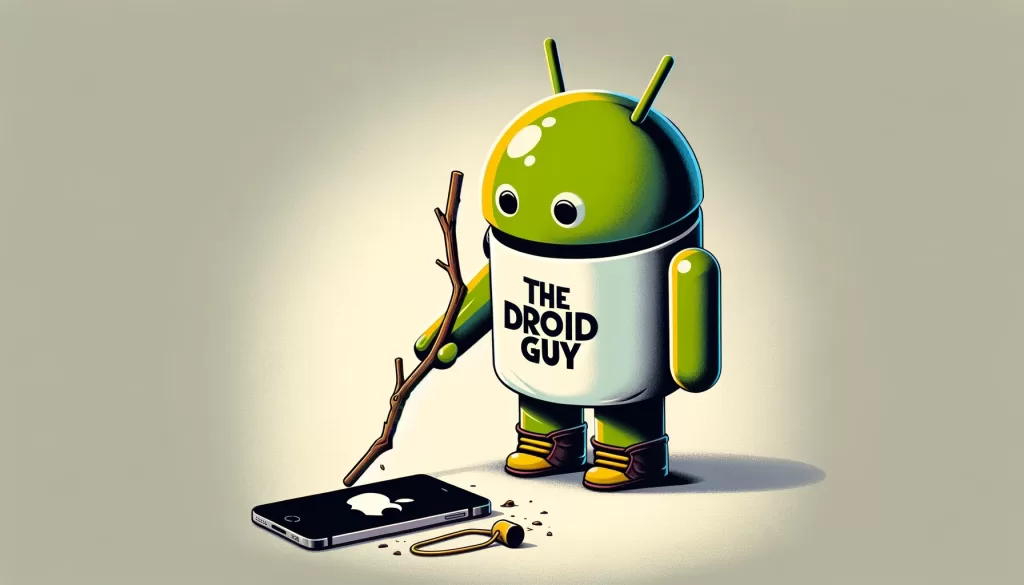50 Actual Reasons Android Users Won’t Switch to iPhone
With more options, customization, and often better value, Android continues to offer key advantages over iPhone for many smartphone users. Here are 50 specific reasons Android users are sticking with Android instead of switching to iPhone.

1. Direct File Access
Android allows direct access to the phone’s file storage, while iPhone restricts this access requiring workarounds for file transfers.
2. Third Party App Stores
Android supports third party app stores for more choice, while all iPhone apps must come through Apple’s App Store.
3. Customizable UI
Android allows deep customization of the user interface, while iPhones offer limited changes to the default iOS interface.
4. More Admin Control
Android gives users more admin control over their phone, while iPhone handles more functions behind the scenes with less user control.
5. Lower Cost Phones
Many Android phones are significantly less expensive than iPhones for more budget-conscious buyers.
6. Familiar Android Platform
Long-time Android users prefer to stick with the familiar Android platform rather than learning the ins and outs of iOS.
7. Removable Batteries
Some Android phones allow users to swap out batteries easily, a feature not supported on iPhones.
8. Expandable Storage
Android phones allow expanding storage via SD card, while iPhone storage is fixed at time of purchase.
9. Headphone Jack
Many Android phones retain the 3.5mm headphone jack, which iPhone has removed in recent models.
10. Home Screen Customization
Android allows widgets, customized layouts, and more on the home screen, unlike the iPhone’s fixed home screen grids.
11. Back Button
Android provides an always available back button, while iPhone relies on gestures or on-screen buttons in different locations.
12. Picture-in-Picture
Android supports picture-in-picture for video viewing while using other apps, a feature only recently added on iPhone.
13. Sideloading Apps
Android allows installing apps from outside the Google Play Store, something restricted by iPhone’s closed ecosystem.
14. USB-C Charging
Most Android phones utilize USB-C charging, while iPhone still relies on the proprietary Lightning connector.
15. Fingerprint Sensor
Many Android phones provide a fingerprint sensor for biometric unlocking, a feature removed on newer iPhones.
16. New Feature Adoption
Android phones tend to adopt new features like high refresh rate screens early on, before those features roll out for iPhone.
17. Proprietary Accessories
Android accessories are cross-compatible, while iPhone relies heavily on proprietary cables and connectors.
18. Music Library Deletion Issues
iTunes sometimes unexpectedly deletes local music libraries, an issue avoidable by manual file transfers on Android.
19. iMessage Lock-in
Apple makes it hard to switch from iPhone to Android without losing iMessage connectivity temporarily.
20. Always On Display
Many Android phones have offered always on displays for notifications for years, a feature only recently added to iPhone.
21. Limited Customization
iPhone allows very limited customization options relative to the open Android platform.
22. File System Access
Android provides access to the file directory for direct file manipulation, a capability lacking on iPhone.
23. Ad Blocking
Android allows installing apps and extensions to block ads, something not possible on the closed iPhone platform.
24. Notch Dislike
Many Android phones offer notch-free front face designs, unlike iPhone’s prominent notch.
25. Custom ROMs
Android allows installing complete custom operating system ROMs for maximum customization.
26. Hardware Value
Top Android phones tend to offer better performance and hardware value compared to equally priced iPhones.
27. Ecosystem Lock-in Avoidance
Android provides an open ecosystem, while Apple employs tight ecosystem lock-in across its products and services.
28. More Selection
There are far more Android phone brands and models to choose from compared to Apple’s limited iPhone options.
29. Built-in Stylus
Many Samsung Android phones offer an integrated S Pen stylus, a feature not available on any iPhone.
30. Region Unlocking
Android apps allow installing apps from other regions, while iPhone region locks app availability.
31. Phone Durability Reputation
Some Android brands like Samsung have successfully marketed durability, while iPhones are perceived as more delicate.
32. Android Auto Advantage
Android Auto’s interface, capabilities, and wireless mode make it preferred over Apple CarPlay for many.
33. Windows Integration
Android integrates seamlessly with Windows PCs, unlike Apple’s closed ecosystem lock-in approach.
34. Walled Garden Dislike
Android provides an open platform, contrasting Apple’s closed, restrictive walled garden.
35. RCS Messaging
Android messaging apps support RCS for better messaging with Android users than SMS fallback with iPhone users.
36. Right to Repair Stance
Apple has actively fought right to repair legislation that would benefit consumers.
37. Headphone Jack Removal
Apple pioneered smartphone headphone jack removal, frustrating many wired headphone users.
38. Proprietary Standards Avoidance
Android generally utilizes open standards, while Apple frequently ignores industry standards in favor of proprietary approaches.
39. Budget Options
The Android ecosystem provides many budget-friendly options lacking in Apple’s premium-only iPhone lineup.
40. Retro Gaming Emulation
Android allows emulating vintage gaming systems easily, something far more difficult on locked down iPhones.
41. Manufacturer Flexibility
Android users can switch manufacturers and still keep apps, services, and accessories, unlike Apple’s closed off ecosystem.
42. Apple Ecosystem Lock-in
Apple’s closed ecosystem locks users into Apple-only products and services, while Android plays well with others.
43. Google Assistant
Google Assistant is considered superior to Apple’s Siri in capability, accuracy, and usefulness.
44. Unintuitive Design
Longtime Android users often find iPhone design counterintuitive after getting accustomed to Android conventions.
45. Apple Arrogance Perception
Apple’s marketing and restrictive ecosystem feed negative perceptions of corporate arrogance.
46. Google Ecosystem Integration
Android neatly integrates with Google’s suite of services like Gmail, Docs, Maps, etc. for a cohesive experience.
47. Status Symbol Rejection
Some Android users shun iPhone as they dislike the status symbol social perceptions.
48. Feature Availability
Android consistently provides earlier access to emerging hardware and software features.
49. Notification Customization
Android allows deep customization of notifications, ringtones, and other UI sounds.
50. Proprietary Ports
Android uses USB-C charging while Apple sticks with the proprietary Lightning port.